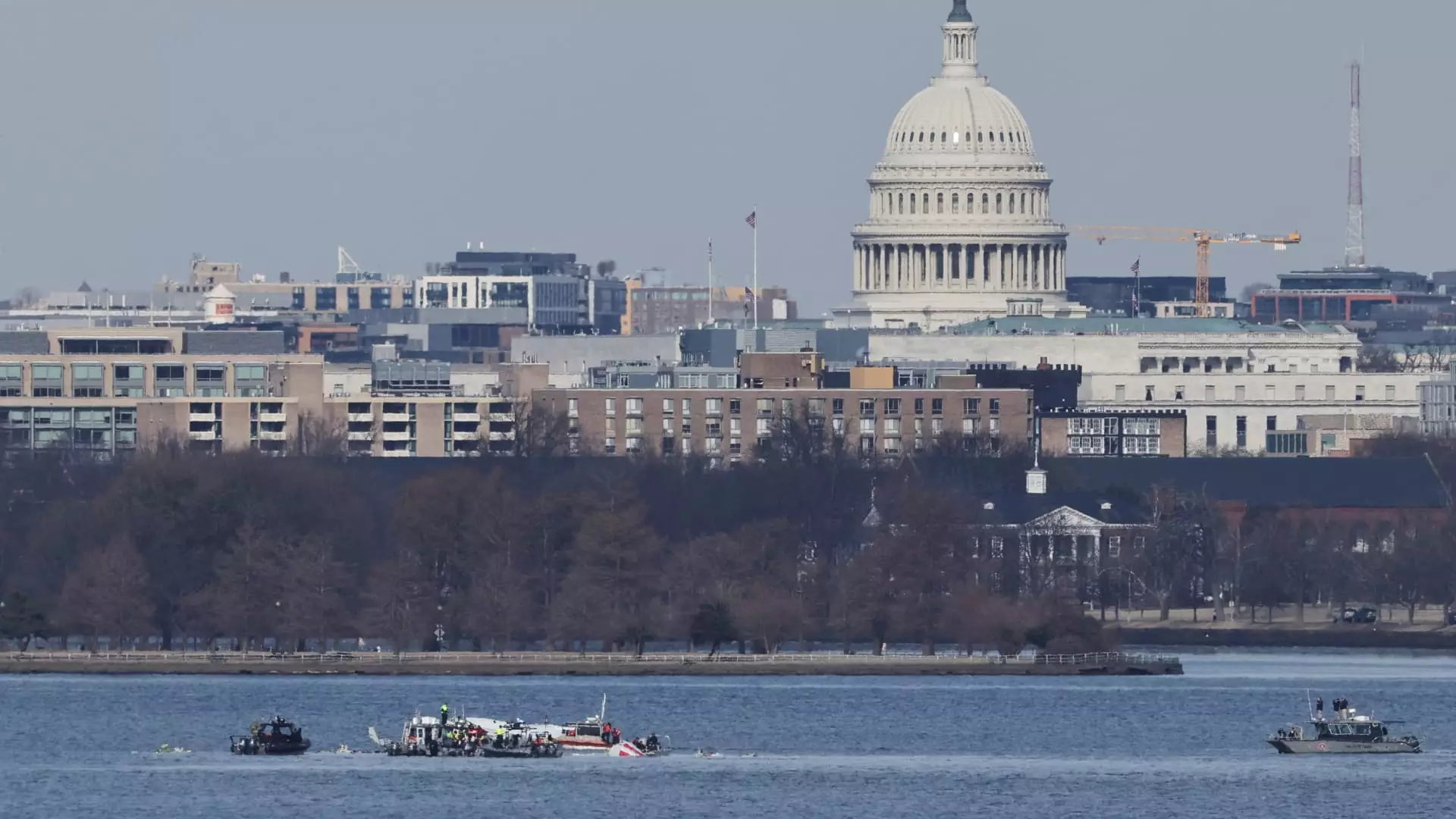On a fateful Wednesday evening, the skies above Washington, D.C., witnessed a catastrophic event that would redefine air safety protocol and raise urgent questions about aviation regulations. An Army Black Hawk helicopter collided with American Airlines Flight 5342, resulting in the tragedy of 67 lost lives, including all passengers and crew aboard both aircraft. As the National Transportation Safety Board (NTSB) continues its investigation, focusing on the helicopter’s altitude and communication protocols, the complexities surrounding regulatory compliance and air traffic control practices come to the forefront.
Initial reports indicate that the PSA Airlines Bombardier CRJ-700 was making its final approach to Reagan National Airport at an altitude of approximately 300 feet. Meanwhile, the Black Hawk helicopter, involved in an annual proficiency training flight mandated by military standards, was expected to maintain a maximum altitude of 200 feet in designated airspace, particularly in such a complex area as Washington, D.C. Investigators and aviation experts are uncovering crucial evidence—flight data and cockpit voice recordings—as they seek answers to how this tragic collision could occur just before 9 p.m. ET.
The FAA’s stringent regulations concerning helicopter operations in busy airspaces like Washington are designed to enhance safety. However, there are crucial questions regarding whether these protocols were adhered to in this particular situation. The revelation that the helicopter was allegedly operating above the stipulated altitude has sparked significant concern from various quarters. Defense Secretary Pete Hegseth publicly acknowledged the error, remarking, “Tragically, last night a mistake was made.” These statements, surfacing early in the investigation, present a stark tone and underscore the gravity of this incident.
The Federal Aviation Administration (FAA) has since imposed new flight restrictions in the region, aiming to circumvent future calamities. Yet, the root causes of this disaster extend beyond the specific actions of the helicopter crew. The chaotic nature of air traffic in this region, particularly around Reagan National Airport, cannot be overstated. Factors such as staffing shortages within the FAA, combined with a high volume of air traffic, complicate the operational landscape.
Reports suggest that at the time of the incident, the control tower was operating below its typical staffing levels for that time of night. This raises pressing questions surrounding air traffic management protocols and their effectiveness in ensuring safety. A potential amalgamation of responsibilities allowed a single controller to oversee both fixed-wing aircraft and helicopters, a risky compromise in an environment challenged by congestion and high stakes.
The tragic incident marks a sorrowful end to a nearly 15-year period of commercial aviation safety in the U.S., which has experienced no fatal crashes since 2009. Despite an increase in passenger traffic by over 25% in recent years, this incident illustrates that the aviation sector must remain vigilant in ensuring safety and compliance. Emerging trends—such as staffing shortages and related operational challenges—demand scrutiny and prompt intervention.
Operations at Reagan National Airport are often scrutinized for their complexity. John Cox, a retired airline pilot and aviation safety consultant, emphasized the focus required by pilots during landing. He stated that aligning with the runway necessitates acute concentration, and any external factors that impede this focus could have dire consequences.
As investigators sift through evidence and statements, the ongoing probe will have ramifications not only for those directly involved but also for the broader aviation community. The collision’s aftermath demands an honest and thorough accounting of systemic failures, regulatory shortcomings, and adherence to safety protocols.
The public expects transparency and accountability in the wake of such heartbreak. As families begin to process the implications of this tragedy, the discourse surrounding aviation safety will escalate, potentially influencing legislative efforts to fortify regulations surrounding helicopter operations and improve air traffic control protocols.
The violent collision that occurred over the Potomac River is a grim reminder of the intricate dance of aviation safety and the implications that arise from lapses in protocol. As the investigation unfolds, the hope remains that it will illuminate the necessary changes to prevent such occurrences in the future and ensure that the skies above our hearts and homes are safe once more.


Leave a Reply